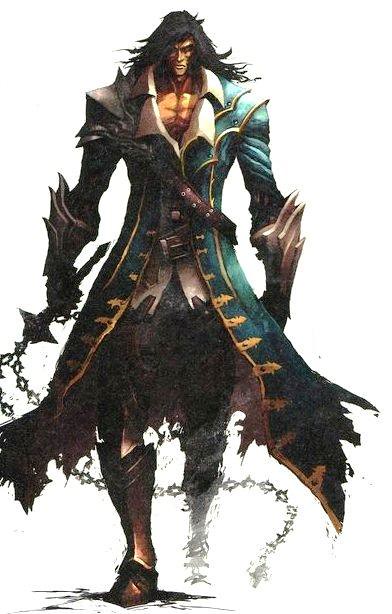I know I posted about the
first dungeon adventure on Dave Arneson Day and that post was inspired but a lot of talk about Dave and the documentary
Secrets of Blackmoor that was being released about that time. This in turned spurned a lot of talk about how Dave Arneson and the twin city gamers played back in the day before we had all these crazy rule books that are thick enough to stop a bullet. The truth is, they adapted some rules from various war games and board games but a lot of it was very narrative based. For an example of this, someone asked the Secrets of Blackmoor crew about how they handled various things such as hit points and below is the conversation;
David Wesely who is the creator of Braunstein also commented in a recent online conversation about later editions of Dungeons and Dragons and their complexity;
Dave Arneson created his own fantasy setting called
Blackmoor. There have been a handful of Blackmoor campaign books that ranged from the original Dungeons and Dragons days to the 3.0 era. Some of the best information can be found online at
The Blackmoor Archives.
Regardless of that quick history lesson, I was very inspired to create a game that would be in the spirit of Dave Arneson and I hope what I have came up with would be something he would be proud of. I decided to call it "Way of the Forgotten Hero". I named this because I view Dave Arneson has the forgotten hero of table top gaming.
Character Creation
1.Write down a name, be creative and clever.
2.Choose a profession. A profession can be anything that is job focused and setting appropriate. Examples are Alchemist, Assassin, Barbarian, Beastmaster, Beggar, Blacksmith, Dancer, Executioner, Farmer, Gladiator, Hunter, Magician, Merchant, Mercenary, Midwife, Minstrel, Noble, Physician, Priest, Sailor, Scribe, Slave, Soldier, Temptress, Thief, and Worker.
3.Write down three different words or phrases, called traits, about your character. Traits should be specific and not overly good. Traits can also include racial distinctions (elf, dwarf, etc.) and possible social affiliations.
4. Write down any equipment you think your character should have with them or that would fit your character concept and 20 gold.
5. Your character has 15 hit points.
Tests
When resolutions are not clear, the referee will call for a test. Players roll 1d12 vs. a Target Number determined by the referee (though this knowledge is usually kept from the players):
Routine: 6+
Challenging: 8+
Heroic: 10+
Legendary: 12+
If any of your traits, profession*, or equipment can help then add +1 per trait, profession, or equipment that helps to the test. If any of your traits, professions, or equipment hinder the situation you suffer a penalty instead.
*Professions cannot be used for direct combat.
Opposed Tests
Opposed tests happen when two sides are trying to achieve different goals but are in direct competition (ex. Arm wrestling). When this happens, both sides make a test a whichever side has the highest result wins. Some situations may require more then one test to accomplish the task.
Combat
The referee calls for initiative and everyone makes a test. The highest result goes first and everyone else follows in a clockwise order from whoever went first.
Characters get two actions per turn. They can move and take one of the following:
- Draw Weapon/Item
- Use Magic
- Focus (+2 to next attack)
- Defend (+2 to Defense until the beginning of next turn)
- Attack (Melee or Ranged)
All opponents that are considered a trained combatant (this includes the player characters) are considered to have a Defense of 6 and everything else has a Defense of 4. To make an attack, the player makes a test vs. the targets defense. If the attack is successful, damage is subtracted from the targets hit points.
If miniatures are used, the player can move their miniature a normal pen length during their move action.
Gear
Some gear provides +1 to rolls. Weapons deal 1d6 points of damage. When two handed weapons are used, the player rolls 2d6 and chooses the highest. Light armor provides 1 point of damage reduction and heavy armor provides 2 points of damage reduction. Shields provide a +1 bonus to defense. Attacks and other damaging effects always deal 1 point of damage regardless of damage reduction from armor or other sources.
Adversaries
Most NPC’s and basic creatures possess 1-6 hit points and deal 1d6 damage. The more powerful the creature the more hit points they will have. Very rare abilities or creatures of unusual size can deal multiple d6’s of damage.
Magic
A character must have a trait related to magic to be able to use magic. Magic users can produce various minor effects, hinder an opponent for 1d6+1 rounds, and shoot bolts of energy that deal 1d6 damage. All uses of magic under duress require a test. On a result of 1, they magic user suffers burnout (cannot use magic) for 1d6 rounds. Each burnout result increased the range of burnout by 1 in the same day, after the 1st burnout result the range becomes 1-2, etc.
Advancement
After each session, the referee awards 1-3 experience points. When 10xp are accumulated they can be spent to gain 1d6 hit points OR an additional trait. If a trait is chosen, it should relate to the growth experienced during the story.
The entire PDF of Way of the Forgotten Hero can be found
here for free.



































